For those of us in the charity, public and arts and culture sectors, it’s now generally recognised that to stay relevant, to improve results, and to adapt to funding pressures, we have to change what we do, how we are working and how we are structured. Managing change has become a normal part of how we work.
But change is difficult to get right. The processes suffer when people don’t understand the need for change, when the change seems to take forever, and when it’s not clear what people are expected to do differently.
Worst of all, is when a change initiative fails – a restructure doesn’t have the intended impact, and another one is needed 12 months later. More likely than not change fatigue sets in – why should we expend our energy and time when it hasn’t worked in the past? – and without serious damage limitation, the latest initiative may stand even less chance of success.
To avoid change fatigue, we need to get change right. And spot quickly if the change process is failing, so that we can get it back on track.
The most well-established – and commonly used – model for managing change is John Kotter’s 8-step approach. Originally developed for business, we’ve adapted it to make it more useful for the ethical sector. If your change process is stalling it is useful to go back to Kotter’s model and use it to identify where exactly the problem lies.
Step 1 Establish a sense of urgency
The first step is to ensure that people understand why the change is necessary now. Change needs effort, and people won’t do it if they can’t see anything wrong with the status quo. Have you clearly explained what is driving the change? Is it a crisis, a potential risk, a current opportunity or a positive future? Why is it not ok to stay as you are – what’s the urgency?
To navigate the organisation through change you need a group with the authority to steer the journey and make decisions. Do you have a guiding coalition made up of a mix of internal and external stakeholders? Are they clear about their authority and how they make decisions? Who is operationalising the change? A change manager? A change team? Do these two groups understand their responsibilities and accountabilities?
Whatever your original impetus for change, you need to develop a positive and engaging vision of what the future will look like afterwards. Have you done that? And has your change team established the specific actions that will help the organisation to achieve the change outcome?
To engage people in your change you need to communicate the change vision. Have you told people where you want to get to and how you’ll get there? Has this communication been constant and consistent and the message clearly understood?
For the change to happen you need to show people how they fit in and what they can contribute. As well as helping the change, it also increases motivation when people feel able to contribute ideas and energy. What actions are you asking people to take?
People involved in the change can lose heart, especially if the change takes a while. Do people understand and accept that the process can be long and difficult? Nevertheless they will need to feel they’re making progress. Have you spotted in advance some successes en route to the overall goal that will show small wins occurring? These successes needn’t be huge but they do need to be shared and understood. For example, when a key action is completed, a significant decision is made, essential feedback from a key stakeholder comes in, etc.
With enough of these short-term wins your change process now has that key ingredient – momentum. As momentum increases the more wins you can have, providing people notice them and are able to build on them. Are you actively and systematically sharing and building on that momentum and using it to leverage greater progress?
It’s not enough to change structures, processes, activities or even people. To create permanent change you need to make sure people don’t revert back to the way it was. Do you have symbolic and practical ways to ensure that the change you want is so deeply embedded in the organisation that there is no chance of things rolling back?
If your change process is failing, identify what you are seeing around you, and then diagnose what is causing the failure. The following can help.
If you are seeing…
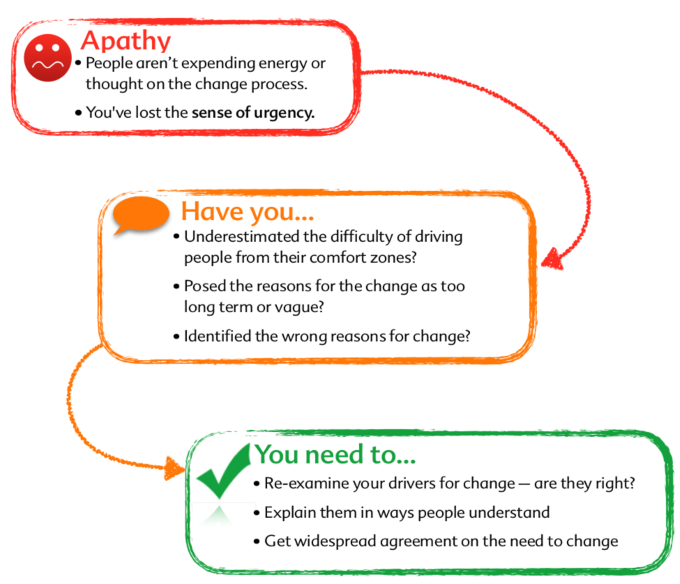
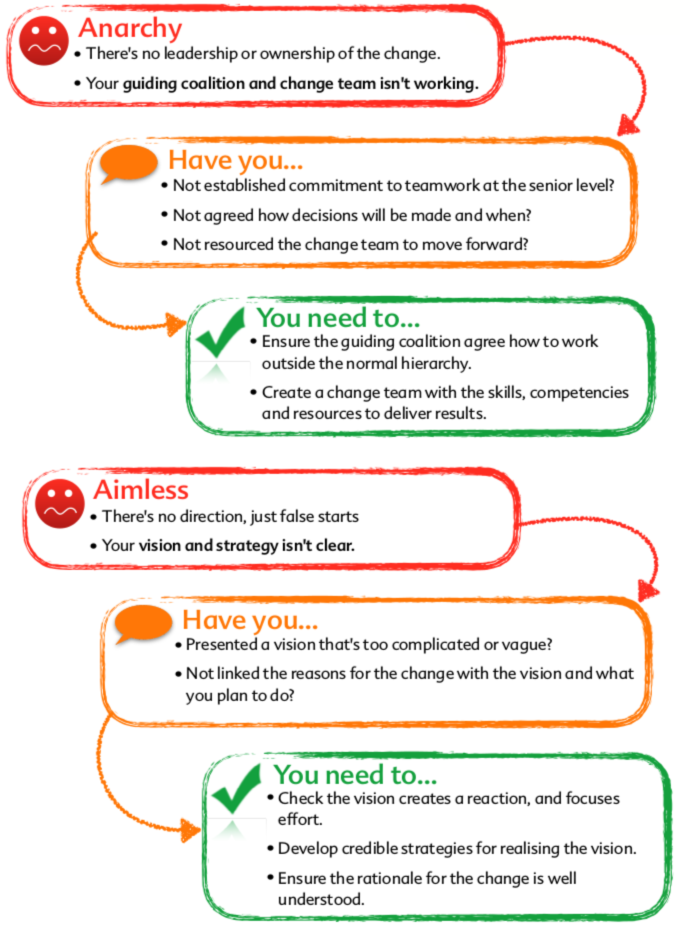
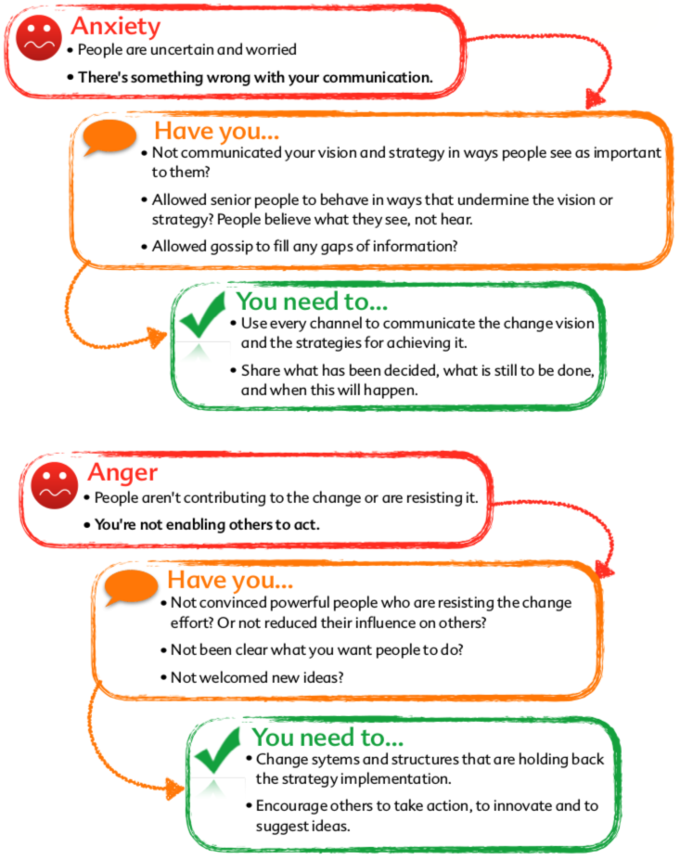
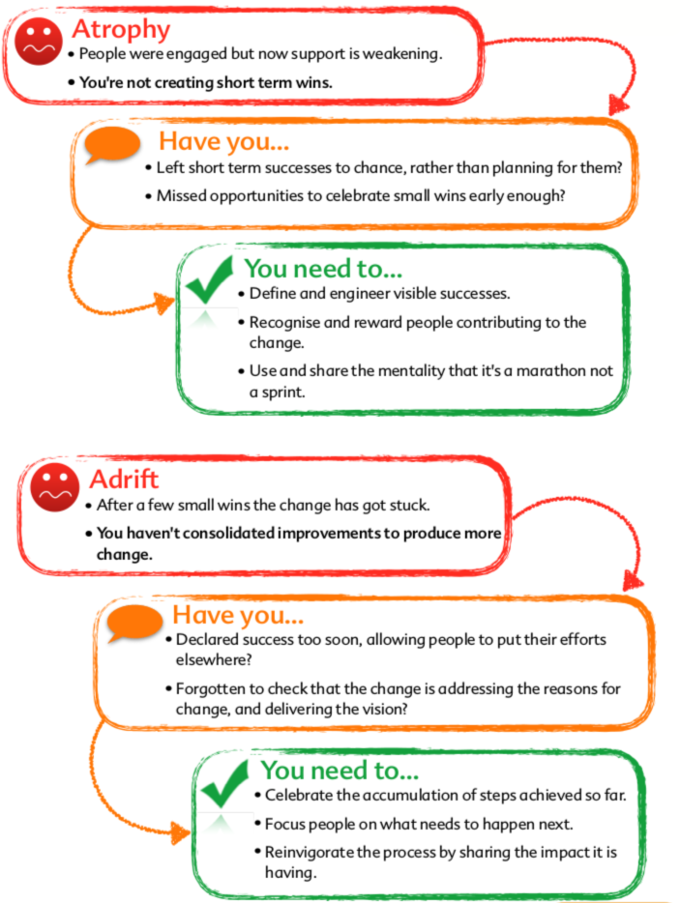
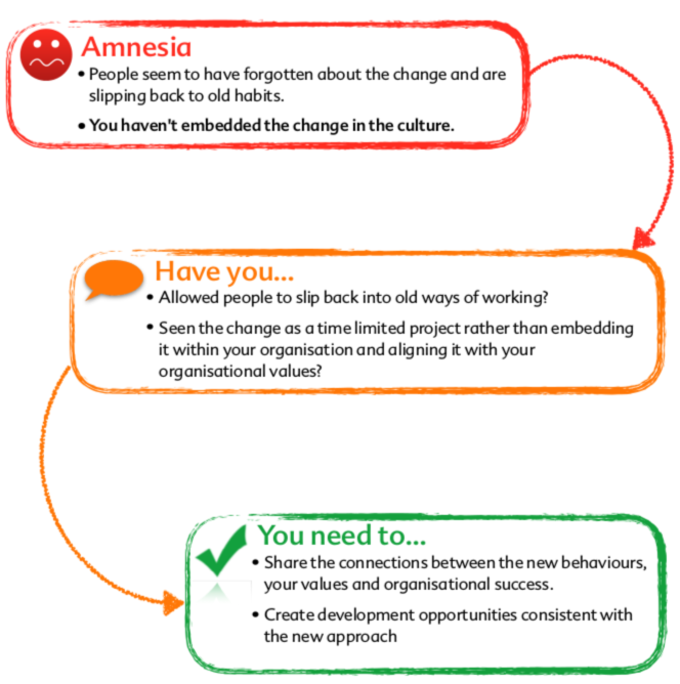
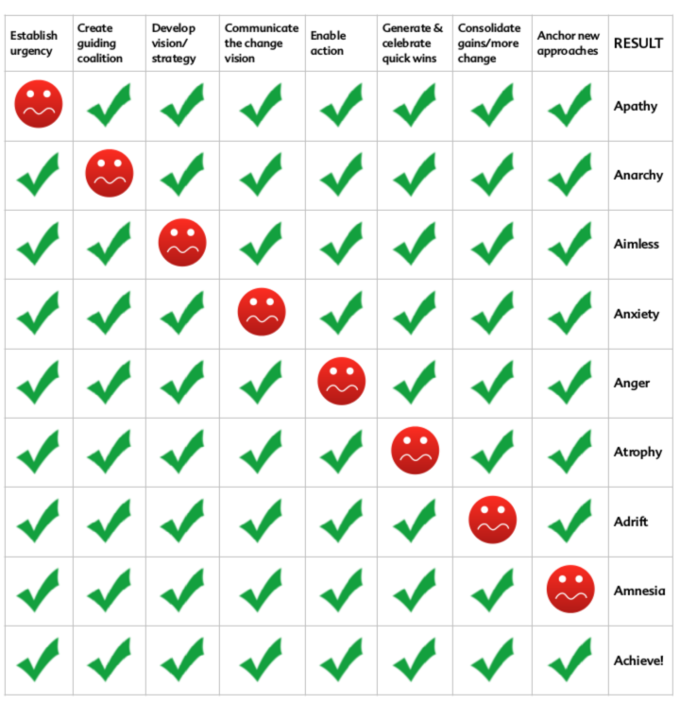
There is no getting away from it. However well we think it through and plan it out, change means going into the unknown. And that means we can’t predict everything from the outset.
The most effective change leaders anticipate problems, spot them early and address them quickly. This article is designed to help you do that.
Whether you are planning a change or in the middle of a change process and feeling a bit stuck, we can help.
We have two training programmes aimed at different people in the organisation. Leading and Managing Change introduces managers to a range of tools and approaches to plan an effective change and keep it on track. Change & Me looks at personal responses to change and is designed to help staff to both understand and manage their own response to change, and to identify areas where they can take control.
We can also help to design and plan a change process ensuring that it keys in to the vision and mission of your organisation, and providing practical support to keep it on track.
For more information contact us online or call 020 7978 1516 to speak to one of our consultants.